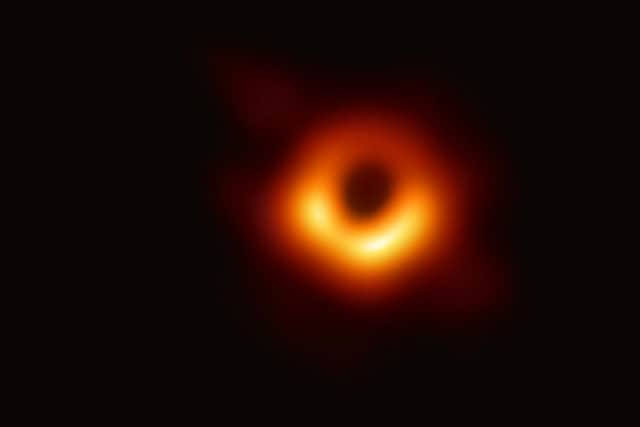Messier 87: the first image of a Black Hole captured by scientists is spinning, study find
This article contains affiliate links. We may earn a small commission on items purchased through this article, but that does not affect our editorial judgement.
and live on Freeview channel 276
Astronomers have captured evidence of black hole spinning, scientists say.
The observation was focused on the supermassive black hole at the centre of the Messier 87 galaxy, which neighbours us and features powerful jets that are launched from the poles at close to the speed of light into intergalactic space.
Advertisement
Hide AdAdvertisement
Hide AdIt was predicted that the rotation of a black hole powers these cosmic jets, but until now the evidence was not present.


“After the success of black hole imaging in this galaxy with the Event Horizon Telescope, whether this black hole is spinning or not has been a central concern among scientists,” said Dr Kazuhiro Hada, of the National Astronomical Observatory of Japan and co-author. “Now anticipation has turned into certainty. This monster black hole is indeed spinning.”
M87 is 55 million light years from the Earth and has a back hole 6.5 billion times more massive than the Sun.
Beyond the blackhole is a disk of gas and dust which swirls on the edge of the sinkhole. Some space material will fall into the black hole however, some will get ejected out from the poles of the black hole at more than 99.99% of the speed of light.
Advertisement
Hide AdAdvertisement
Hide AdTheoretical models suggest the black hole spin was responsible for this situation, due to the charged particles that drags the material with it.
However, the latest study, which was published in Nature, looked at a global network of radio telescopes taken from 2000 to 2022 which revealed a recurring 11-year cycle in the jet, which precessed around a central point at the edge of the black hole. This suggested a misalignment between the black hole’s spin axis and the accretion disk, leading the jet to wobble like a spinning top.
“Detecting this precession provides unequivocal evidence that the supermassive black hole in M87 is indeed spinning, thus enhancing our understanding of the nature of supermassive black holes,” the authors said.
Dr Ziri Younsi, an astrophysicist at UCL, said: “That’s exciting because it’s telling us that it can only precessed if the black hole has non-zero spin. It’s an indirect but extremely strong confirmation of spin.”
Advertisement
Hide AdAdvertisement
Hide AdYounsi added that a black hole’s spin could, in future, give insights into the cataclysmic events that led to the formation of the supermassive black hole. “The fact that it’s spinning and there’s a tilt tells you that something pretty crazy happened in the past,” he said. “At some point in its history, something violent happened. It provides tantalising hints that that might be the case.”
Comment Guidelines
National World encourages reader discussion on our stories. User feedback, insights and back-and-forth exchanges add a rich layer of context to reporting. Please review our Community Guidelines before commenting.
